The Hawker Sea Hawk was the single-seat fighter jet for day time that was designed to be used by the Royal navy’s FAA (Fleet Air Arm) branch. The aircraft was designed and manufactured by the Hawker Aircraft along with the help of their sister company named Armstrong Whitworth Aircraft. The design of the Hawker Sea Hawk originates from the earliest model of the Hawker Piston-engine fighter aircraft the Hawker Sea Hawk still became the first jet fighter of the Hawker Aircraft.

The aircraft got accepted by the Royal Navy and after entering the service proved to be a sturdy workhorse. A good number of Hawker Sea Hawk aircraft were also manufactured to be exported to other countries like Dutch Navy and the Indian Navy. The last of the Hawker Sea Hawks retired back in 1983 by the Indian Navy.
Origin:-
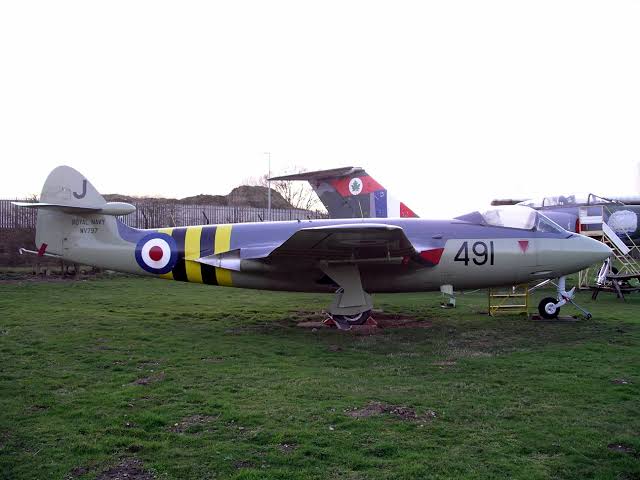
The origin of the Hawker Sea Hawk comes from the days of World War II when turbojet technology was making its rise in military applications. Hawker aircraft took the design of the Sea Fury aircraft’s airframe to design a new aircraft that would be fitted with the Rolls Royce Nene turbojet engine. This resulting aircraft was designated as P.1035 and the potential customer for this aircraft was Royal Air Force but RAF opted in favor of the Gloster Meteor and de Havilland Vampire.
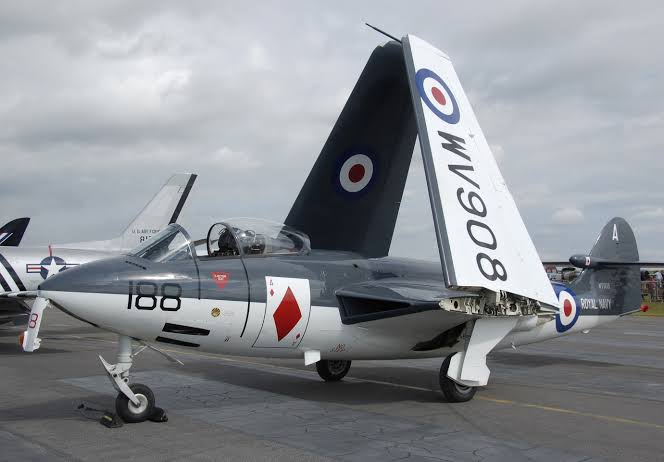
At that time Royal navy came knocking on doors of Hawker Aircraft for a new aircraft to serve in the FAA branch. The aircraft was designated as P.1046 by the Hawker Aircraft and the navalized prototype under the name VP413 was created. While the earlier Royal Air Force prototype had taken its first flight back on 2nd September 1947, the testing trials for this navalized version started in 1949. Following successful tests and the development finally concluding, the aircraft was named as Hawker Sea Hawk.
Development:-
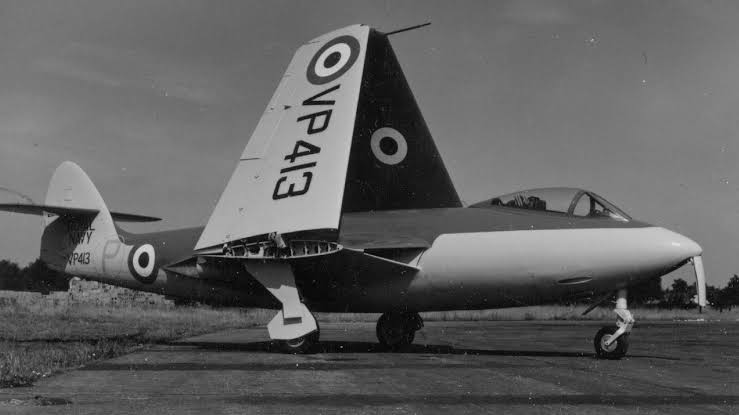
The initial production line of the Hawker Sea Hawk was started by the Hawker Aircraft back in the 1950s. the requirement of the Royal Navy was to produce the aircraft while equipping it with Rolls Royce Nene 101 turbojet engines and it was designated as Sea Hawk F.Mk 1 with the first delivery to be made to the 806 Squadron operating out of Brawdy.
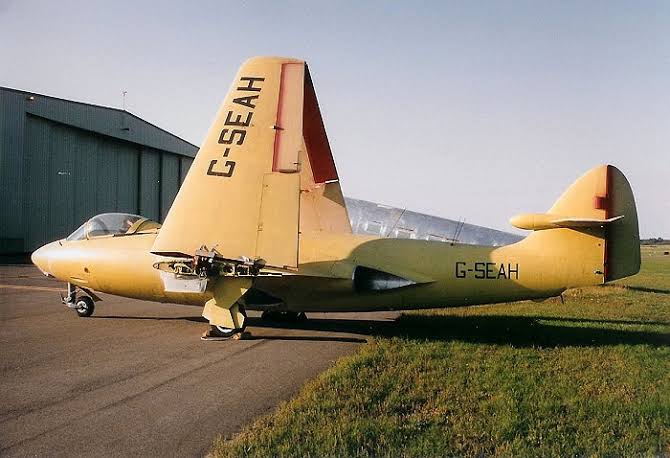
Nearly 542 of these Hawker Sea Hawk aircraft were produced before they ended their tenure with the Royal navy before retiring permanently. The aircraft not only served the Royal navy’s FAA but also other countries like the Netherlands, German and India. Interestingly enough the Hawker Aircraft only produced some 30 of these Hawker Sea Hawks before they shifted the production line t their sister company Armstrong Whitworth Aircraft. The reason for this production shifting was that hawker Aircraft was developing another jet-powered aircraft which was named Hawker Hunter. This aircraft went on to serve the Royal Air Force.
Walk-around:-
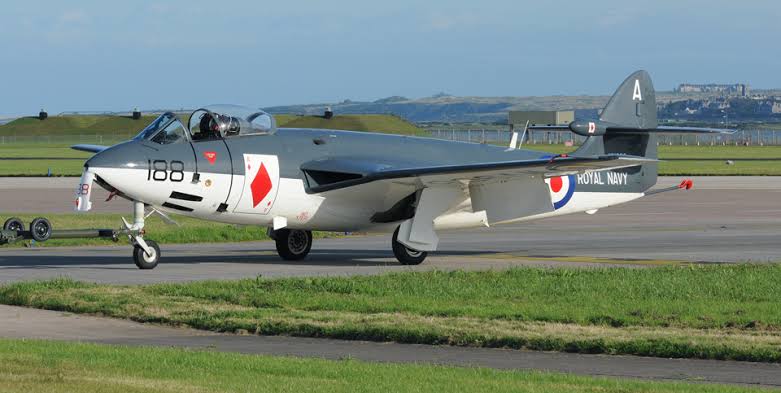
The resting position of the Hawker Sea Hawk offered for low set design with its belly lying aft of its cockpit. The front had a nose cone assembly in the front with the pilot sitting under the aircraft’s two pieced canopy. The curved main section of this canopy allowed for improved vision. The fuselage of the Hawker Sea Hawk was elongated which had straight and low-mounted monoplanes on the sides. Intakes were also fitted on the sides of the fuselage with a single powerplant fitted deep in the airframe.
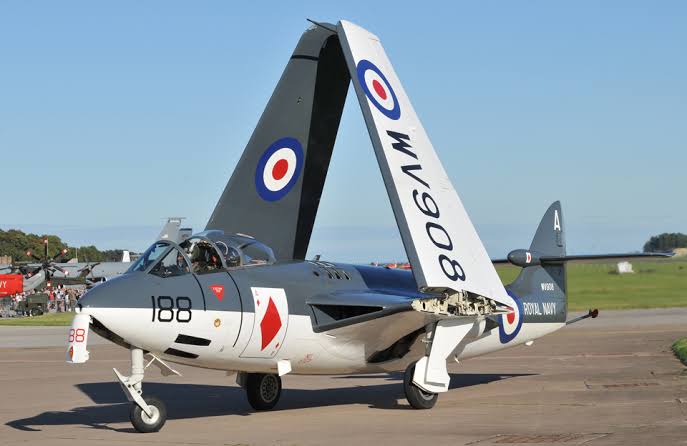
The undercarriage of the Hawker Sea Hawk was of tricycle arrangement with two main landing gears in the rear and single landing gear in the front just beneath the aircraft’s nose cone and ahead of cockpit’s floor. These landing gears were fully retractable.
Powerplant:-
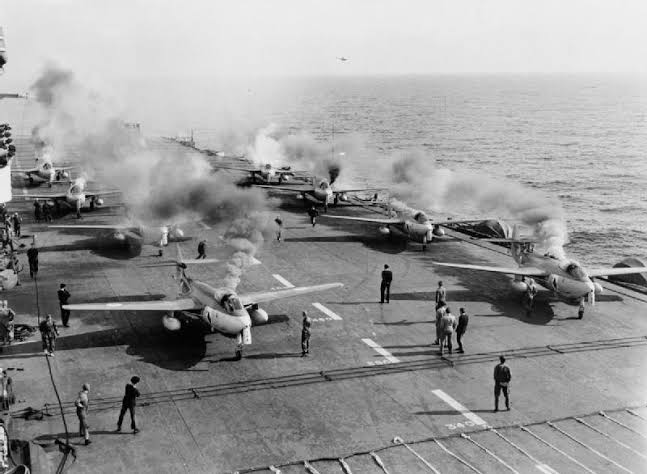
The Hawker Sea Hawk utilized a single Rolls Royce Nene 103 series turbojet engine that could create a thrust of almost 5200 lb/ft. This allowed for the Hawker Sea Hawk to fly at a top speed of nearly 600 mph with the maximum range being 480 miles and the service ceiling being 44500 feet. As for the MTOW (maximum Take-off Weight) of the Hawker Sea Hawk, it was about 16150 lbs while the empty aircraft would weigh about 9278 lbs. the overall length of the aircraft was about 39 feet with wingspan being 39 feet and a height of about 8 feet 8 inches.
Armaments:-

British, Soviets and German; all three of them realized during World War II that the cannons were the best standard armament choice for a fighter aircraft rather than the machine guns. The rate of fire from cannons was slow but they could dispatch the enemy fighter and bombers effectively. This is why the Hawker Sea Hawk was fitted with 4 of the 20 mm Hispano Mk V cannons. Each of these cannons could fie 200 rounds.
As for the aircraft’s external munition carrying capability, it could be fitted with the following weapons.
- 16*5” unguided rockets
- 20 unguided rockets of 60lbs weight each
- 4 conventional drop bombs of 500lbs each
The aircraft was plumbed to have 2 hardpoints for carrying the fuel tanks to increase its loitering time and range.
Combat Service:-

The Hawker Sea Hawk was introduced by the Royal navy into the Suez Crisis when the President of Egypt Nasser went on to nationalize the Suez Canal. Suez Canal was of vital importance to Britain for its interests in regions like the Indian Ocean, Pacific Ocean, and the Persian Gulf. Britain participated to settle this matter with a secret military pact made with Israel and France. The Hawker Sea Hawks were called in during this military mission and neutralized targets like Egyptian airfields.
Hawker Seahawks in the Indo-Pak War:-
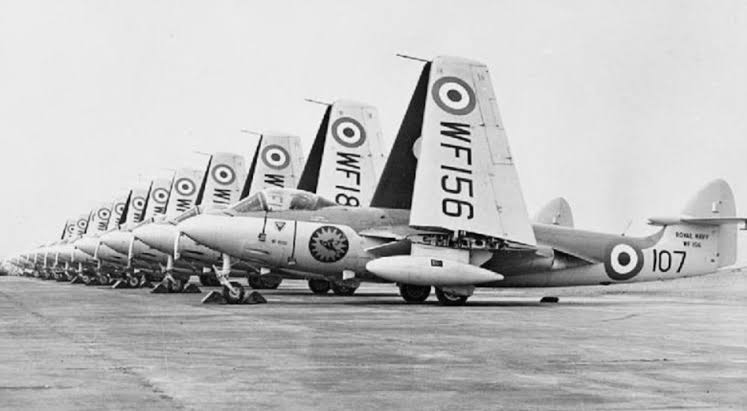
Indi and Pakistan have not only fought 2 major wars in 1965 and 1971 but also many small and low-intensity actions. Dring these low-intensity actions, air combat was the major support for the ground forces.

During these actions, Pakistan used the American made aircraft and other weaponry while India used the Hawker Sea Hawk from Britain and Germany back in 1960. In the 1965 Indo-Pak war, India used the Hawker Sea Hawks to take part against the Pakistani targets. These Indian Hawker Sea Hawks were also used in the 1971 Indo-Pak war.
Retirement:-
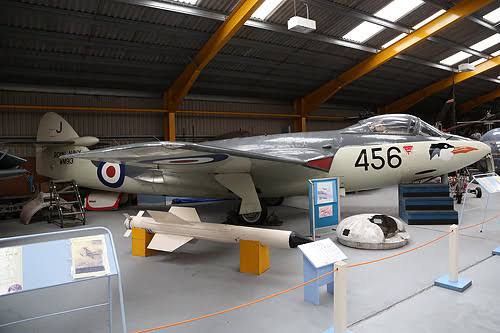
The last of the Hawker Sea Hawk aircraft was retired back in 1983. Nowadays many of the Hawker Sea Hawks can be found in museums in preserved conditions in the following countries.
- England
- Scotland
- Germany
- Northern Ireland
- Netherlands
- India
Related Content
Amazing facts about Supermarine Scimitar; The British Naval Fighter
Interesting facts about the Soko G-4 Super Galeb aka Super Seagull
Interesting facts about Xian JH-7 Flounder/FBC-1 Flying Leopard




